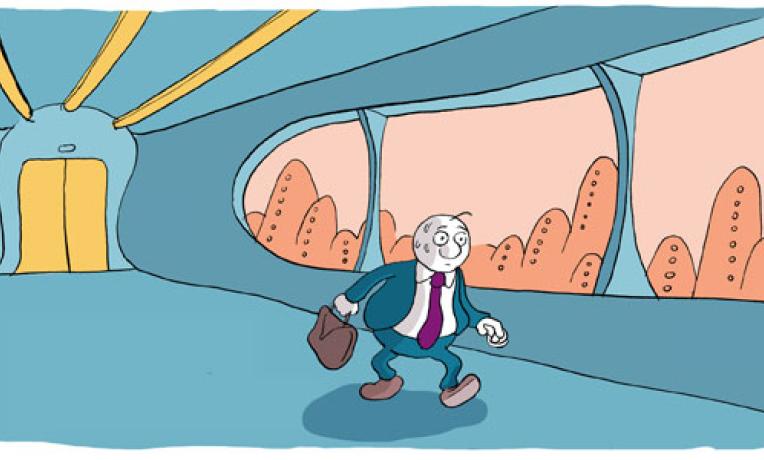Jojo, the epidermal cell
Jojo is an epidermal cell - as was his father and his grand-father before him. While the dream of his life is to become a neuron, he faces the hard and fundamental dogma of biology: once a skin cell, always a skin cell…

Jojo's destiny is nevertheless about to change. His human “host” has just being diagnosed with Parkinson’s disease, but he finds hope in the work of a forefront researcher, Fanny. "What if skin cells could be reprogrammed into dopaminergic neurons, so as to repair the damaged brain?" she thinks. The life of the skin cell, Jojo, will take a whole new direction…
In the real world, skin cells do not fight for a better life and Fanny's name, a researcher in the flesh, is Dr Malin Parmar. She is a Professor at Lund University, Sweden, working on cellular reprogramming. In 2013, she received a grant of €1.5 million from the European Research Council (ERC) to focus on new cell-based therapies that could replace lost dopamine neurons with new, healthy cells. At the frontiers of the existing knowledge, her promising work offers a new path for personalised treatments to tackle Parkinson disease and other degenerative disorders of the central nervous system.
Malin Parmar thinks outside the box, in the lab but also beyond. She believes in the importance of communicating her complex work and had no fear in doing so in an original way. That is why she applied last year to ERCcOMICS, a 4-year project piloted by Université Pierre Marie-Curie and La Bande Destinée, a communication agency based in Paris specialised in illustration. The aim of this project, launched in December 2015 by the ERC, the EU funding agency for excellent research operating under H2020, is to communicate complex science in a friendly and innovative way, using storytelling techniques and web comic support.
"The type of research I do is really cool", explains Dr Parmar. "I reprogram skin cells and other types of cells into neurons, which sounds like science fiction but it is science reality. We can turn a skin cell into a neuron in a culture dish, or even turn resident glial cells into neurons directly in the brain, which will eventually make it possible to repair a damaged brain. Explaining that process to general public in a simple way has its challenges. However, I believe that visualising it has a great impact on the public's understanding of not only our research, but also of why it is important for the entire Europe to support researchers in their efforts".
The success of this communication venture strongly relies on the cross-fertilising cooperation between the EU-funded researchers and the artists selected each year through an open call for interests. Working hand in hand, they are challenged to develop an original story and to select the scientific content that will be conveyed to the larger public through each web comic. The selection of the projects - four each year – is based on the narrative capital of the research, its potential impact for society and the researcher's enthusiasm. Scientific variety is also a criterion, as well as geographical representation and gender balance, among others.
So far, both the researchers and the artists involved have been really enthusiastic about the initiative and have fully embraced it. For the scientists, ERCcOMICS represent an opportunity to tackle their research from a different angle. According to their feedback, the process helps them to better identify the bottlenecks, to come up with new ideas and to reflect on the impact of their research. For the artists, the big challenge is to decipher extremely complex science and to develop a coherent narrative that creates a real buy-in. Each web comic proposes a different navigation experience, with various styles, semi-animation, sound and several levels of interactivity. The viewers praise the originality of the comics and of the approach, far from more traditional institutional communication.
This year, "A cell's life" is presented along three other web comics, "Estrella", "Expecting" and "Brain Trippers", based on research projects that focus on stellar dust creation, the struggle of migrant pregnant women, and ultrasound brain imagery. If you are an impatient reader and cannot wait for the monthly chapter delivery, you may want to discover the completed stories of last year. "Max Order", on artificial intelligence, "And the invisible" – optics and relativity, "Tree climbers" – the proliferation of lianas, and "Beauty"- dissemination and production of beauty standards, are just waiting for you.


